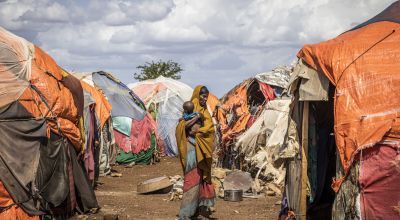
Read our 2023 annual report

Knowledge Hub
While the vast majority of refugees (78% according to the UNHCR) are hosted in cities, that still leaves approximately 9.5 million refugees living in camps around the world. The biggest among them can host nearly 1 million on their own. What does life look like for those living in these camps, and what does it take to get there?
To understand what life is like in a refugee camp, it helps to know what life was like for many residents before they arrived there. Leaving home isn’t always the first option, but sometimes it’s the only choice.
“Back in Sudan, we used to be farmers... Life was very good,” says Fatima*, a 48-year-old mother of five. Now living in a camp for refugees forced to flee the ongoing crisis in Sudan, Fatima recalls Mondays and Thursdays spent making kisra bread and bean cakes to sell at the market, along with onions, garlic, and other crops from their farm.
Then, fighting broke out in the Sudanese capital of Khartoum on April 15, 2023. Fatima’s younger brother was killed, along with her husband’s son. Her husband, who was travelling with another son, reached neighbouring Chad. From here, he called his wife and told her she needed to get out.
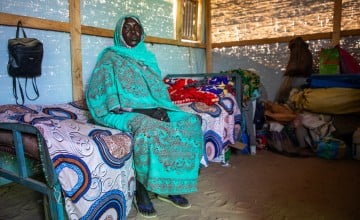
Even early on in the conflict, getting out was not easy.
Fatima’s neighbours gave her the money she needed to move with the rest of her children. A journey from their village to Chad would normally cost 3,000 to 4,000 Sudanese pounds (SDG; approximately €4.50 to €6.00), but for this trip she wound up paying 250,000 SDG for four people (62,500 SDG per person).
“Luckily for us, no one died during the journey,” she says. “All they did was take money from us.”
First stop: Transit sites
Fatima and her children first arrived at a transit site in Chad, essentially a layover site for displaced people to register before being relocated by NGOs to refugee camps.
These are a common first stop for refugees in the early weeks and months of a crisis, when hundreds or thousands of people leave their country each day. Such a massive influx requires the United Nations High Commissioner for Refugees (UNHCR) to set up these midway processing points in order to register everyone arriving.
While the organisation normally hopes to relocate people to camps very quickly (the UNHCR usually aims to keep asylum-seekers at a transit site no longer than five days), in the case of Sudan, demand soon overwhelmed the available resources. Fatima and her children were at their transit site for nearly two weeks with little to do but wait.
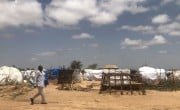
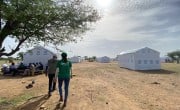
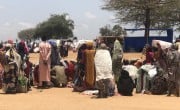
“During those days, we just ate and slept, we couldn’t go anywhere,” Fatima recalls of the nearly two weeks she spent in a transit centre. She had brought some flour with her from Sudan, and collected leftover supplies from other families who had already been assigned to a camp.
However, she adds, she didn’t take the sleep for granted: “When we arrived at the transit site, it was the first time that we slept well. All the time we were back home, all we could hear were the sounds of gunshots. We could not sleep because we were so scared. We lived in fear.”
Fatima and her family were lucky, moving to a camp within two weeks.
For Dijda*, a 20-year-old student in Sudan, both getting out and getting into a camp were much tougher processes. During their journey, they faced harsh attacks and lost the few items they had brought with them from home. Arriving at the camp in April 2023, they had to wait until June to be brought to a camp, and only began to receive food assistance by the end of their time at the transit site.
In the meantime, they waited, anxious both for their futures and those of the relatives and friends still in Sudan. In at least one way, however, her experience mirrored that of Fatima’s: “We would sleep all the time, because there was not much to do.”
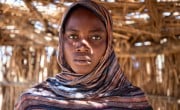
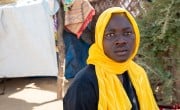
Life in a refugee camp
If we’re spending so much time describing life before reaching a refugee camp, it’s because these experiences are usually the one thing you’re guaranteed to bring with you into displacement. Whether arriving directly at a camp or spending weeks (if not months) in limbo, arriving at a refugee camp can be a relief for the millions of people who make the difficult decision and dangerous journey to reach safety.
“Ever since we arrived here, the safety is good; there is no fear of being killed,” says Nayla*, also a 20-year-old student who is currently in Chad. Arriving at the camp from her transit centre, Nayla received a set of kitchen supplies, sleeping mats, and jerry cans (for collecting water) from Concern, which also brought her family to a health centre for a checkup.
However, refugees also face a new set of challenges. Within the first 72 hours of a displacement emergency, the UNHCR will work with local teams, partner organisations (including Concern), and local governments to set up safe humanitarian spaces for those being forced from home. In rural settings, these usually become the refugee camps you see most often in photographs.
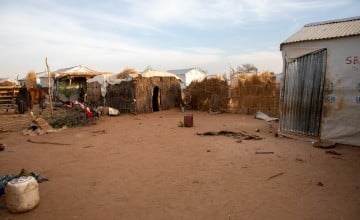
While all parties involved in the set-up and management of these camps aim to provide safe spaces (especially for women and children), easy access to essentials like food and water, and work with host communities to provide things beyond the necessities, can be difficult.
Many of the largest host countries for refugees are neighbouring nations that are also experiencing their own political and economic instability (Sudan itself was hosting roughly 926,000 refugees at the onset of its crisis). Refugee crises are also becoming more protracted, leaving people living in what should otherwise be a temporary camp for years, if not decades.
A fresh start - with fresh challenges
Before leaving home in June 2023, Nayla recalls a mostly pleasant life that centred around her education. “In the morning, we would prepare for breakfast with my brothers and afterward go to school.” This stopped when the fighting reached her village, which claimed the lives of some of her brothers.
At a refugee camp in Chad, Nayla’s life has shifted focus. “In the morning when we wake up, we have to go very far to get water, because we do not have a source of water close to us,” she says, adding that it’s also a challenge to get food.
For her younger brothers, there is a child-friendly space set up for kids to play during the day before they receive primary lessons in the early evening. But for the adults, there’s less to do. “We sometimes do washing and cooking, but after that there is nothing to be done,” she says.
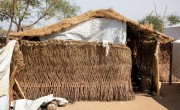
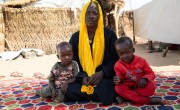
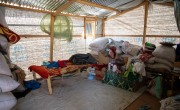
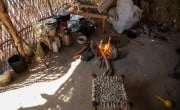
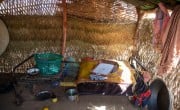
These are some of the obstacles presented in refugee camps and communities (especially as many emergency responses targeting the needs of displaced people have been underfunded, leaving supplies tight and demand high).
However, they’re not the only issues. Many camps are overcrowded, without the adequate sanitation infrastructure to match the number of residents, which often helps the spread of communicable diseases.
Cholera, for example, is a waterborne illness that is endemic in Bangladesh, especially around the time of monsoon season. For the hundreds of thousands of Rohingya refugees living in informal homes at one of the world’s largest refugee camps in Cox’s Bazar, this is a perennial issue. They also face greater exposure to the natural elements.
“We are suffering for a lack of money, lack of water, hot weather, cyclones, and many other things,” says Kulsum*, a 28-year-old wife and mother of four who lives with her family in Camp 13, one of the biggest Rohingya camps in Cox’s Bazar.
“Sometimes, I cry alone as I suffer from the heat and have no other way,” adds fellow Rohingya refugee Anowara*.
“We had a beautiful house in Myanmar. I did not have to suffer from the scorching heat as we had trees around our home.”
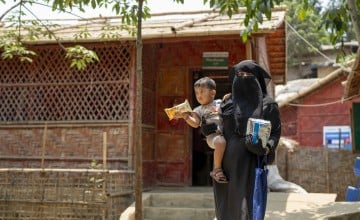
Building a life and earning a living
“I am very anxious as my husband cannot work, and I cannot work either,” 26-year-old Anowara adds, explaining that both she and her husband are severely restricted in terms of both mobility and work opportunities in Cox’s Bazar. Her husband cannot work due to a gunshot wound sustained during their escape from Myanmar, leaving the family of six dependent upon humanitarian assistance for all of their essentials.
This is another common challenge for refugees living abroad.
Life continues even as their lives feel like they’re on hold, and that leaves many in search of opportunities to pay for even the bare minimum of essentials that aren’t covered by aid. “I miss how I could do things for myself back home,” says Hafsa*, a 40-year-old Sudanese mother of five in eastern Chad.
Fatima has found a way to continue making money much in the same way she did in Sudan, by selling kisra - a popular fermented flatbread. Her children then sell it at a local market and she’s able to use the profits to get soap, water, sugar, and other staples.
“I usually get about 4,000-5,000 Sudanese pounds depending on the quantity I have sold,” she says. Still, it’s not an ideal situation (that income works out to about €6 to €8 at the current exchange rate). “I am doing this because there is nothing else to be done,” she adds. “If I can get something else to do that makes me money, I will do it.”

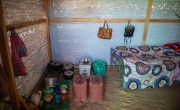
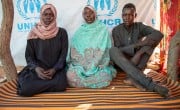
Others, like 20-year-old Nayla, have been able to put their studies to practical use within the camp. While at the temporary transit site, the former student often encountered mothers with sick children. She began referring them to Concern’s mobile clinic, which was set up close to her tent. She now works as a community health volunteer within her camp in eastern Chad.
“During the day, we visit homes and if we find somebody who is sick, we ask the parent or relative to bring them to the health centre,” she says. She also makes follow-ups to patients who have received vaccinations and medication, and helps to screen children for malnutrition using MUAC (mid-upper-arm circumference) tape.
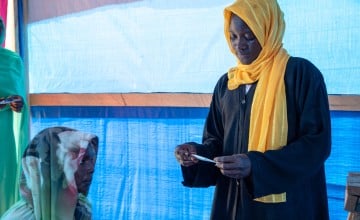
For Kulsum in Cox’s Bazar, services like these are essential as the current Rohingya crisis becomes more protracted.
She has given birth to two of her children in the camp, and relied on Concern’s nutrition centre for her health as well as that of her children. “I could not eat good and nutritious food, and I needed [that] because I was pregnant,” she explains.
“My daughter received the Supercereal from Concern,” she adds, referring to a fortified porridge that helps infants and young children receive their essential nutrients. Kulsum also received seeds for an at-home garden that she was able to start to maintain a diverse and healthy diet for her family in the long term.
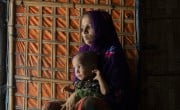
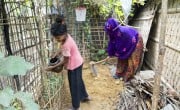
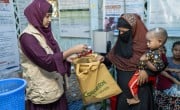
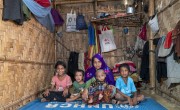
The next steps
While Nayla’s work with Concern makes her days in eastern Chad more fulfilling, they’re nothing compared to home. “It is not easy for me to spend my life here,” she says. “I am hoping that peace can come to Sudan; if the situation will be stable, my hope is that we can go back.”
This is perhaps one of the most universal experiences that refugees around the world share: the opposing yet connected desire to go home, but also to remain safe. Refugee camps and communities serve as a physical space for that contradictory state, because as much as many people want to go home, many also don’t. Fatima offers this perspective: “Since I got here, I have not heard any sounds of gunshots, and that makes me happy because I am finally able to sleep at night. I prefer to stay here because in my country there is no peace.”
Anowara feels both ways at the same time: “We want to return to Myanmar, if there is no more conflict,” she says. “If they start to kill people like before, how could we go [back]?” At the same time, she adds, “we also live in fear [here]. I am always worried about my children’s future. How will I raise them?”
For millions like Anowara, the uncertainty is the hardest part.
*Names have been changed for security purposes.
Our impact in 2023
people reached through our emergency response
people reached through our health interventions
people reached through our livelihoods programmes




